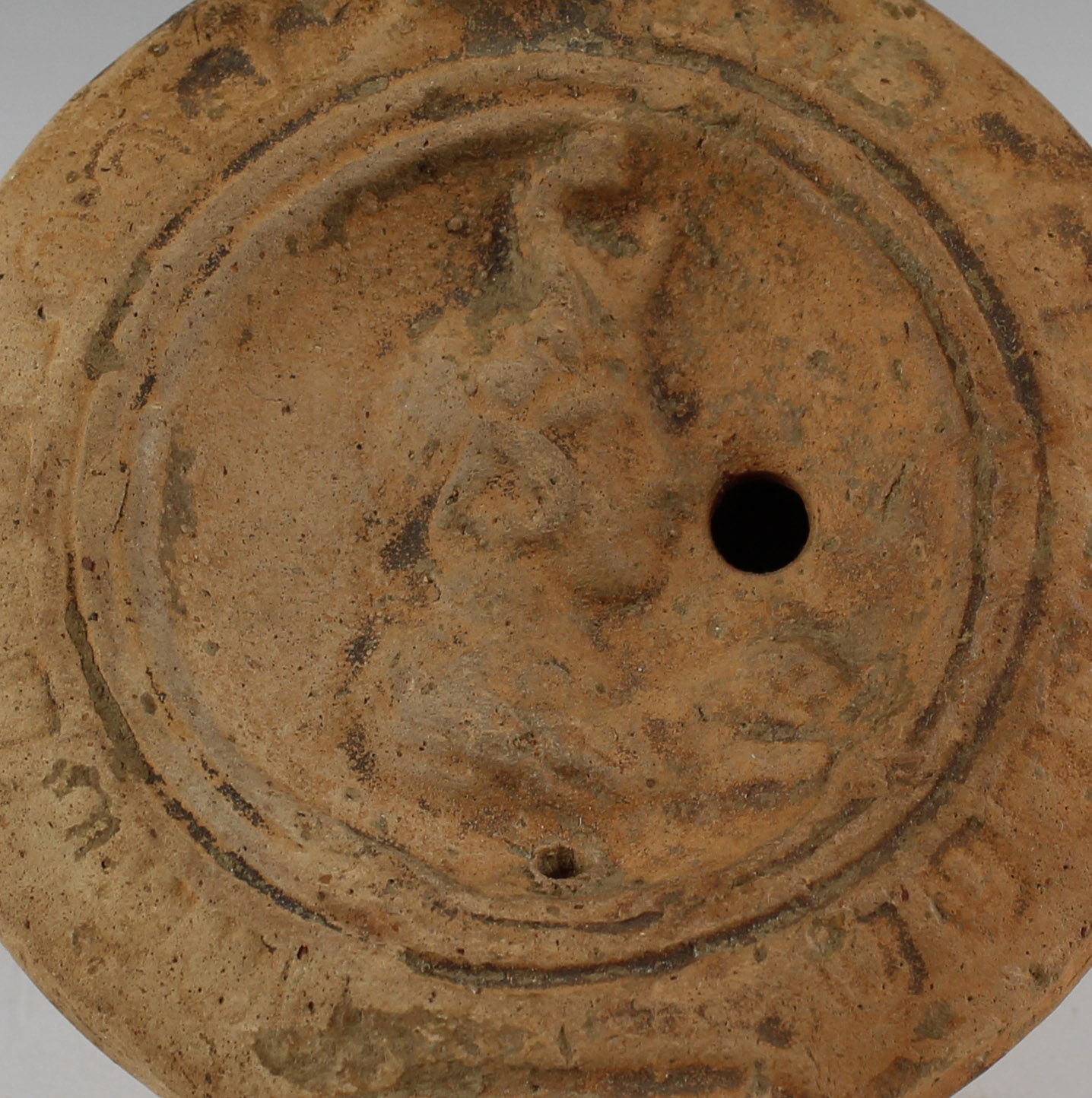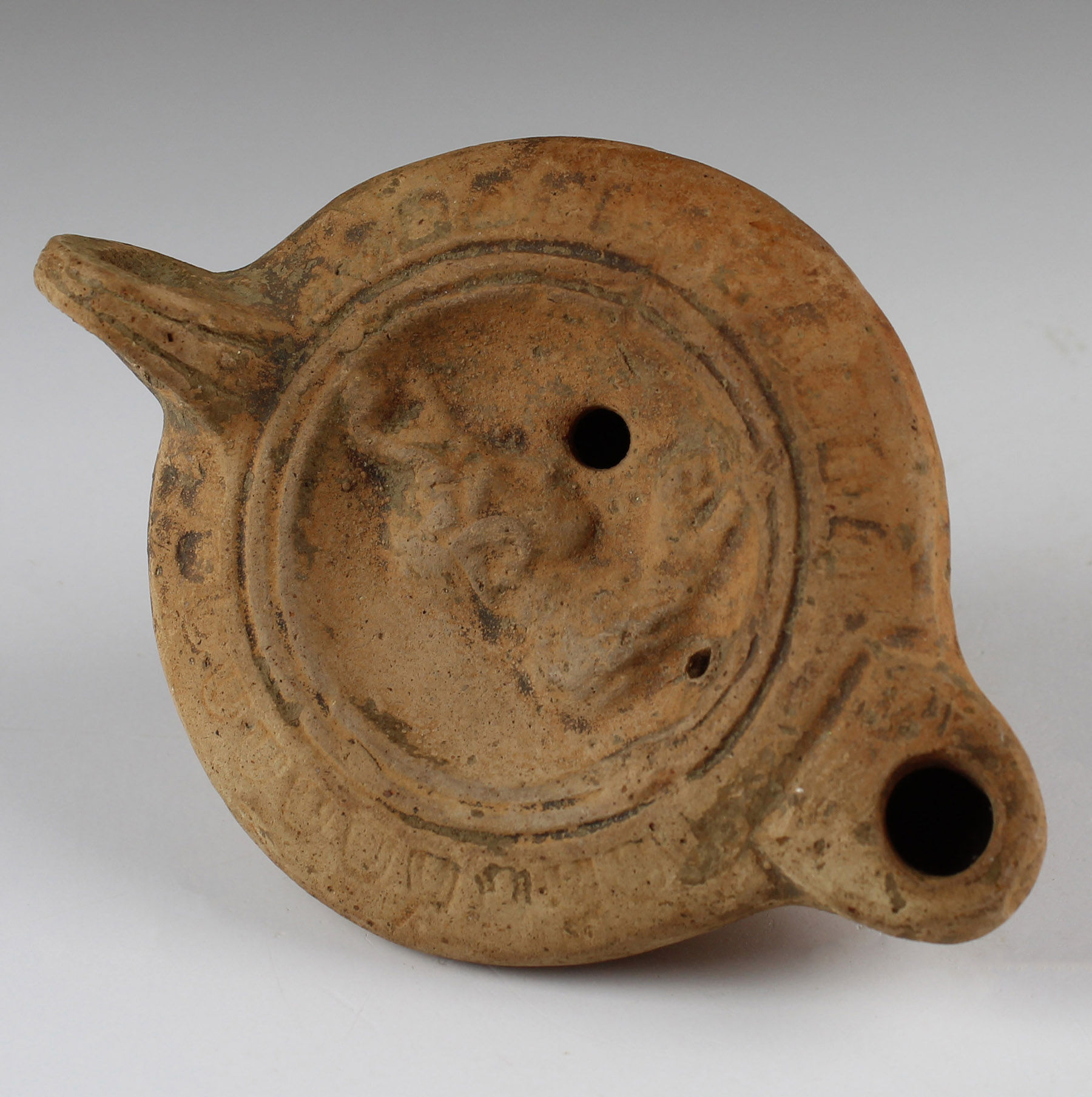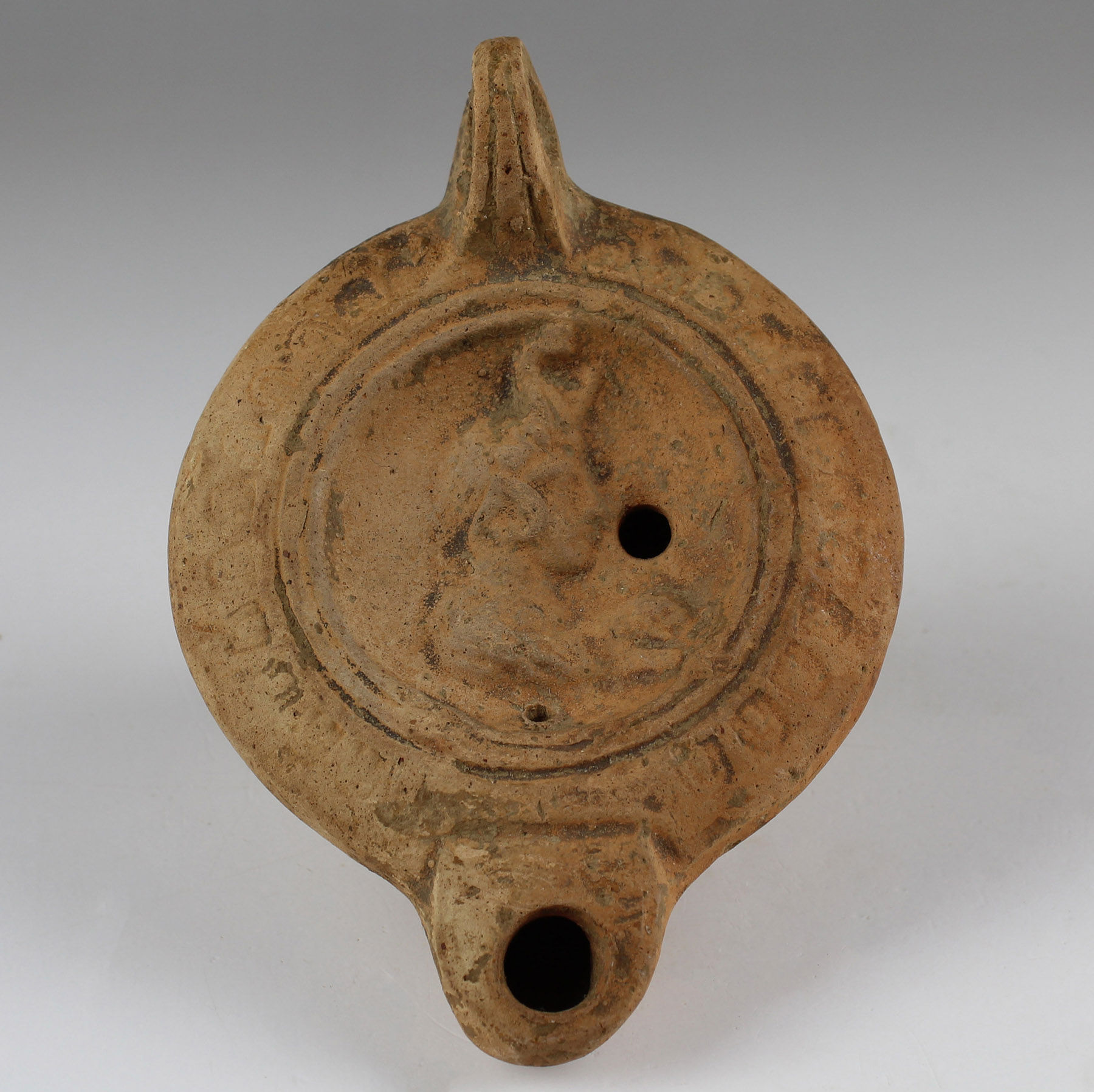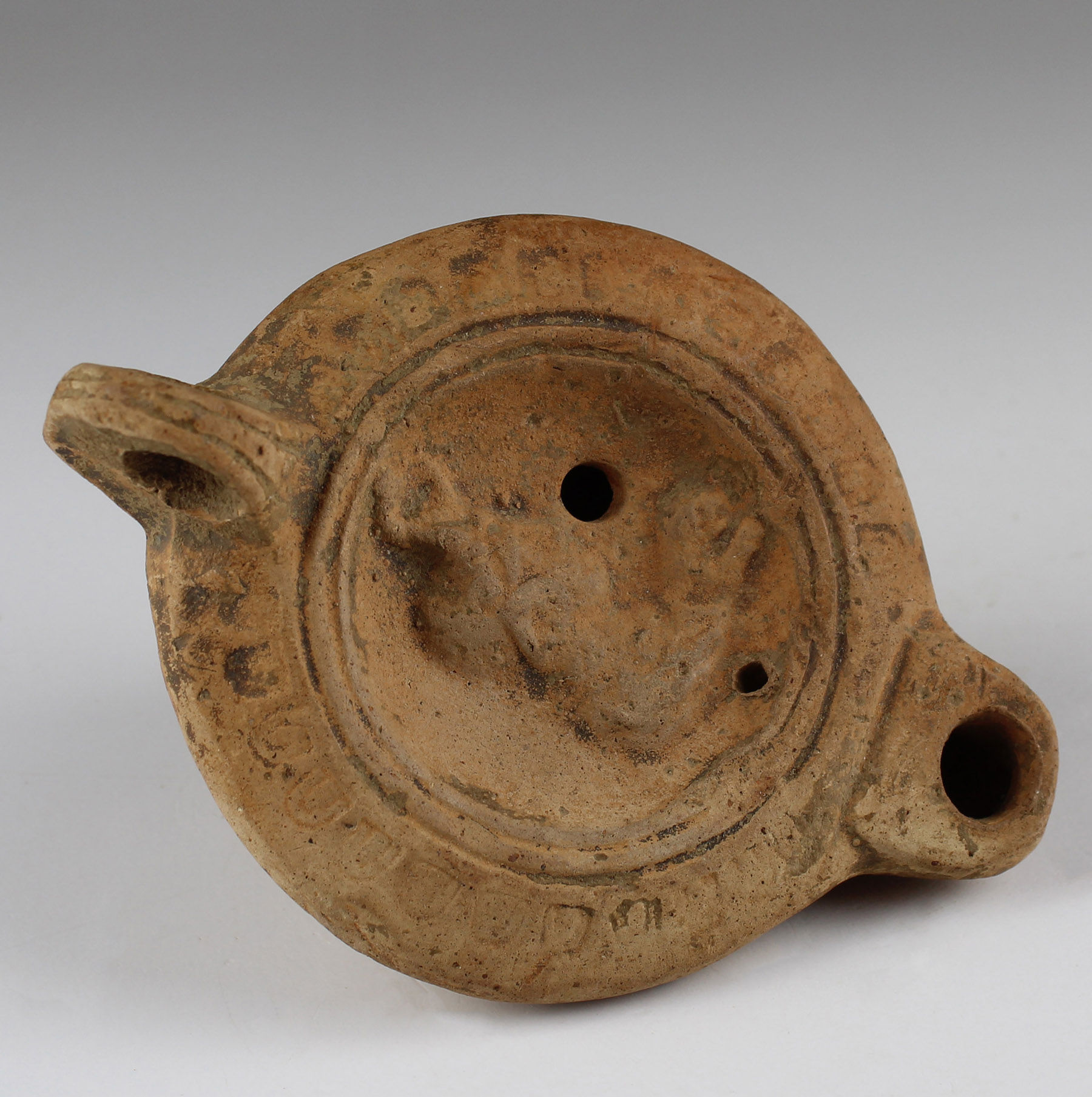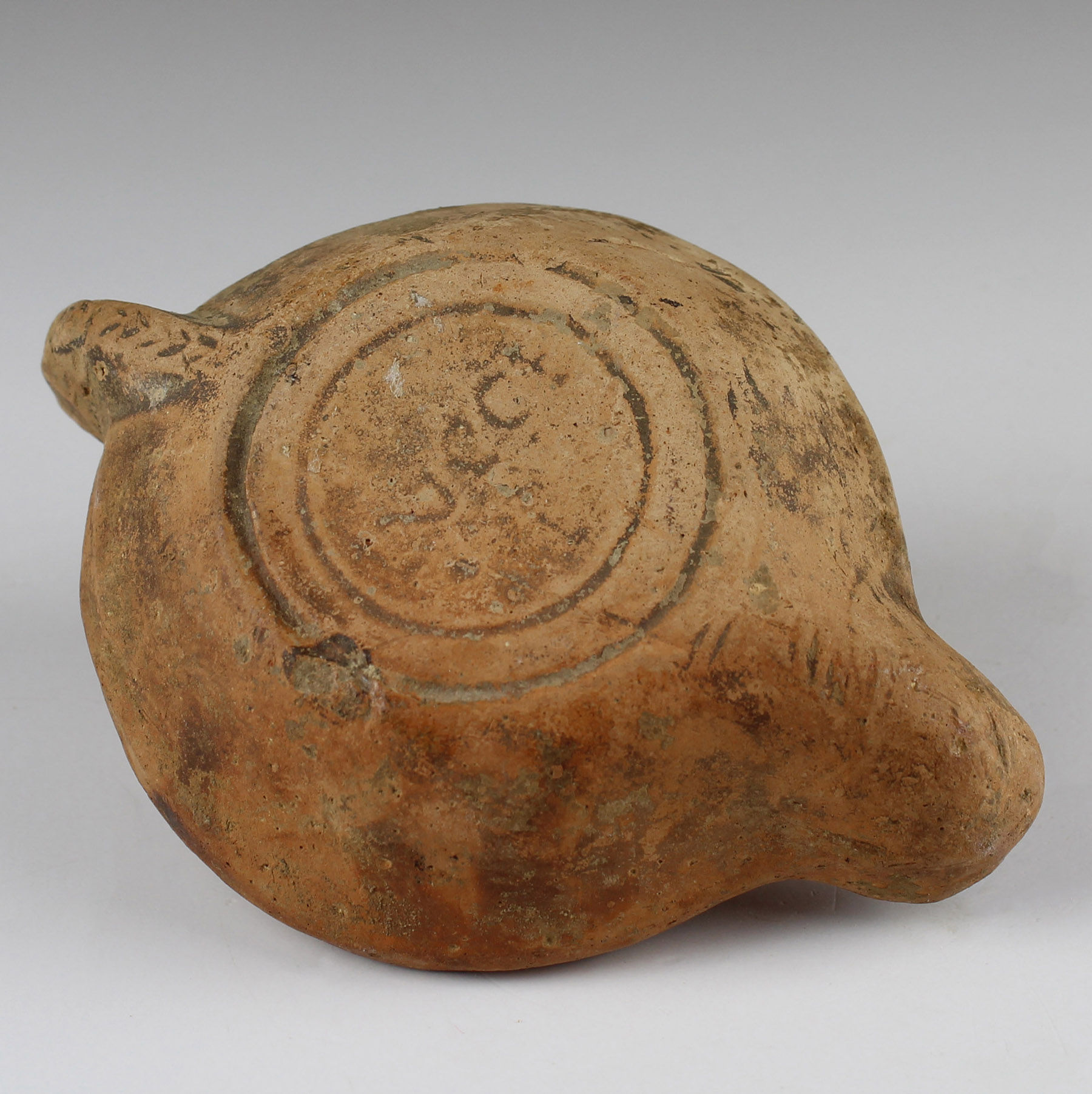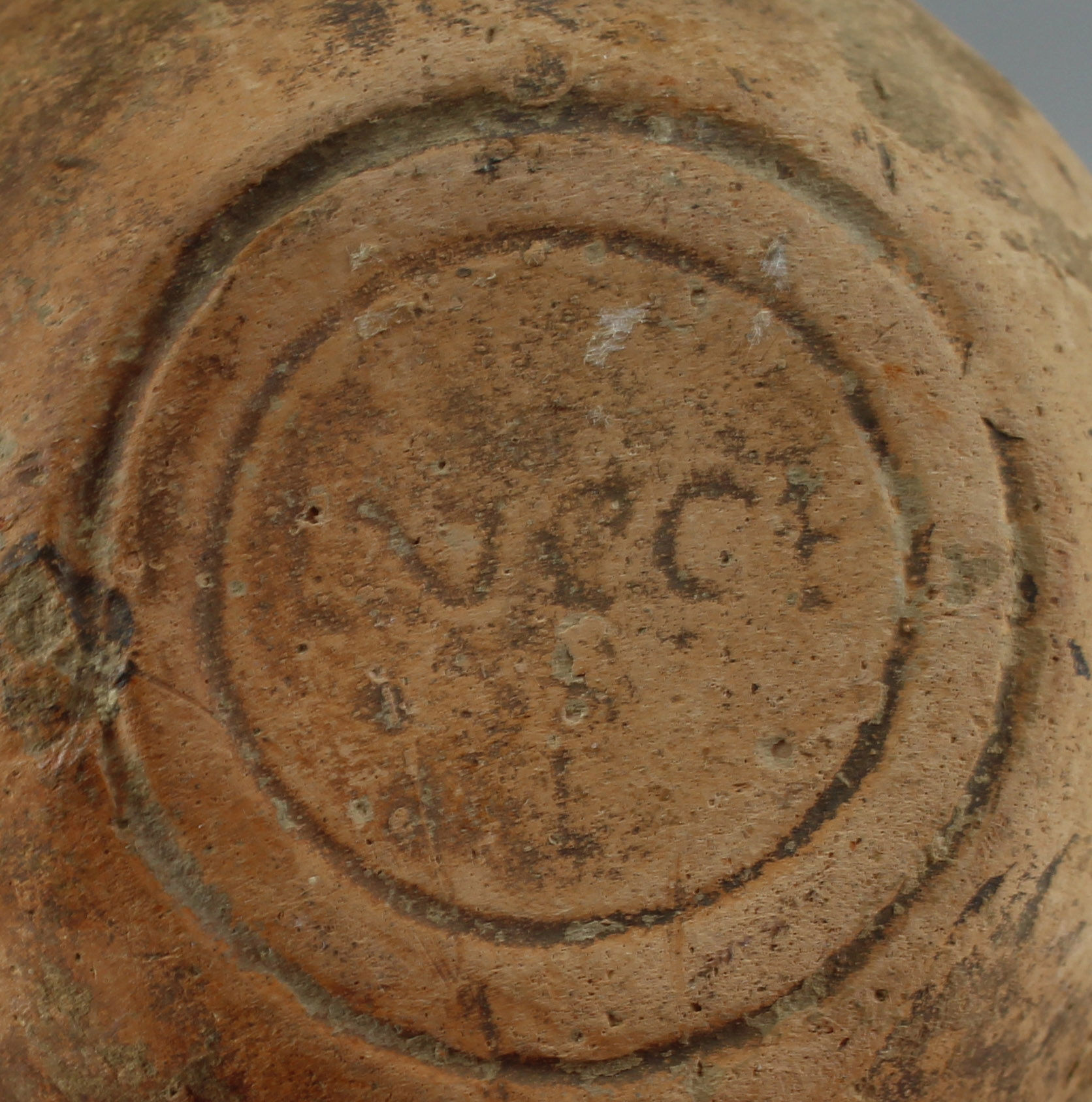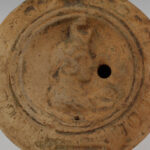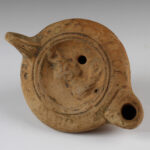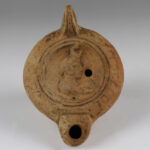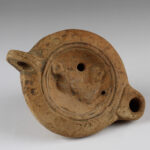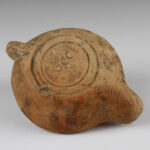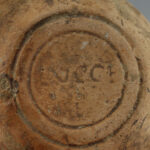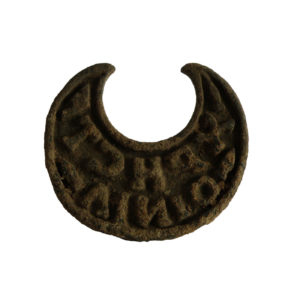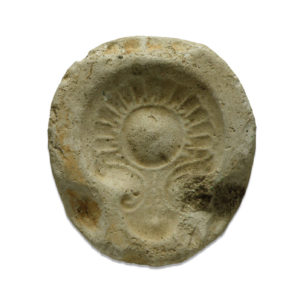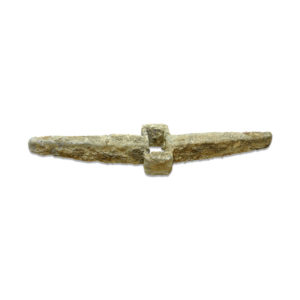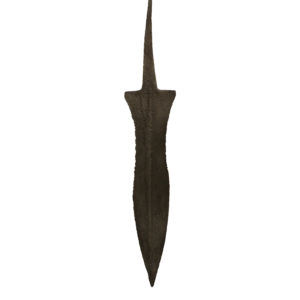Description
| ITEM | Factory oil lamp with Africa, bust surmounted by tusks and trunk of elephant tusks and trunk; in front, a reclining lion. Makers mark incised LVCCEI |
| MATERIAL | Terracotta |
| CULTURE | Roman |
| PERIOD | 1st – 2nd Century A.D |
| DIMENSIONS | 43 mm x 76 mm x 105 mm |
| CONDITION | Good condition |
| PROVENANCE | Ex Emeritus collection (USA), collected from the 1950’s to the 1980’s by a distinguished university professor who served as Department head, Dean and Vice President of a major university. |
| PARALLEL | DENEAUVE, J., Lampes de Carthage, Plate LXXVI, Fig. 826 |
Goddess Africa, also known as Dea Africa, was the personification of Africa by the Romans in the early centuries of the common era. She was one of the fertility and abundance deities to some. Her iconography typically included an elephant-mask head dress, a cornucopia, a military standard, and a lion.
To the Romans “Africa” was above all North Africa, which they had conquered, and the goddess/personification was not given Negro characteristics; she was possibly thought of as Berber, but this cannot be judged in the great majority of representations. This changed after she was revived in the Renaissance, by now clearly only the personification of Africa with no divine pretensions.


